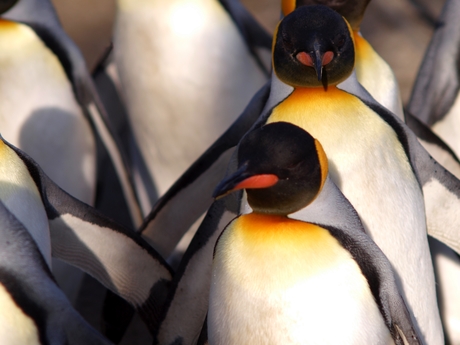Antarctic penguins with bird flu

Researchers have found a new avian influenza virus (AIV) in Antarctica, causing concern that viruses could be reaching the continent more often than previously thought. Their work has been published in the Journal of Virology.
The study was led by Associate Professor Aeron Hurt from the Peter Doherty Institute for Infection and Immunity, whose team travelled to Antarctica to survey penguins and other birds between 2013 and 2015. In 2013, they discovered an avian influenza strain in the penguin populations which had evolved to be substantially different to any other AIVs around the world.
In the most recent project, two viruses were identified. The first was very similar to the one discovered in 2013, but the second was similar to a North American strain, indicating that it had only been recently introduced to the region. And although the Antarctic Peninsula is too far south to be part of the major global flyways migratory birds commonly take, there are a few birds that do migrate there from North and South America.
“This is a concern because avian influenza viruses that can be deadly in many birds have recently circulated in North America,” Associate Professor Hurt said.
“The virus that we discovered on this project does not seem to cause any illness in the birds, but the fact that it is down on the Antarctic Peninsula shows that there is potential for deadlier viruses to also travel down there.”
Associate Professor Hurt described Antarctica as “a fragile environment, and one where fairly unique species of birds live”. The impact of a deadly pathogenic influenza virus would thus have “a really devastating impact”, he said.
Associate Professor Hurt said the research provides insight into how avian influenza moves around the world, which will help scientists assess its risk of entering Antarctica. And while there isn’t much in the way of treatment in wild birds, he said that trying to avoid wild birds becoming infected with viruses in poultry farms could potentially limit the devastation.
“If outbreaks of a pathogenic virus were starting to be seen in poultry farms in the southern parts of South America, for example, we could try and stamp them out as soon as possible, trying to prevent wild birds from being infected,” he said.
A pre-emptive approach to treating leukaemia relapse
The monitoring of measurable residual disease (MRD), medication and low-dose chemotherapy is...
Long COVID abnormalities appear to resolve over time
Researchers at UNSW's Kirby Institute have shown that biomarkers in long COVID patients have...
RNA-targeted therapy shows promise for childhood dementia
Scientists have shown that a new RNA-targeted therapy can halt the progression of a specific type...







